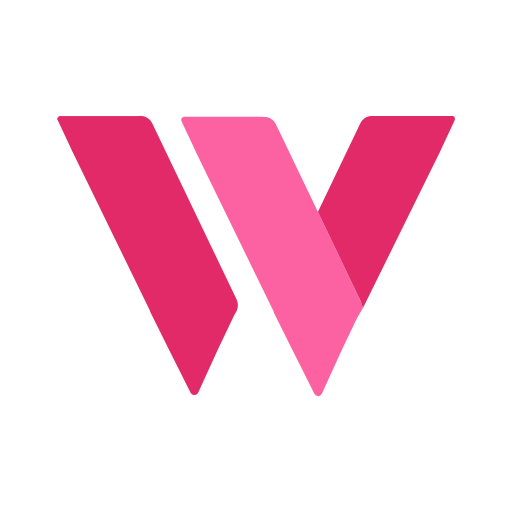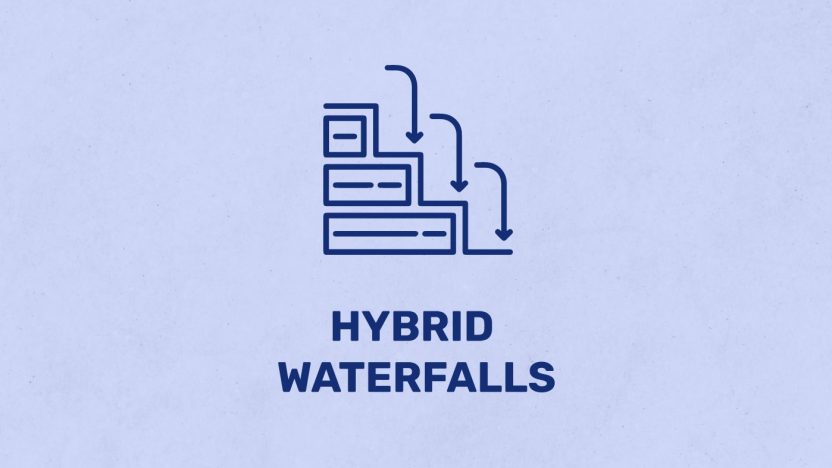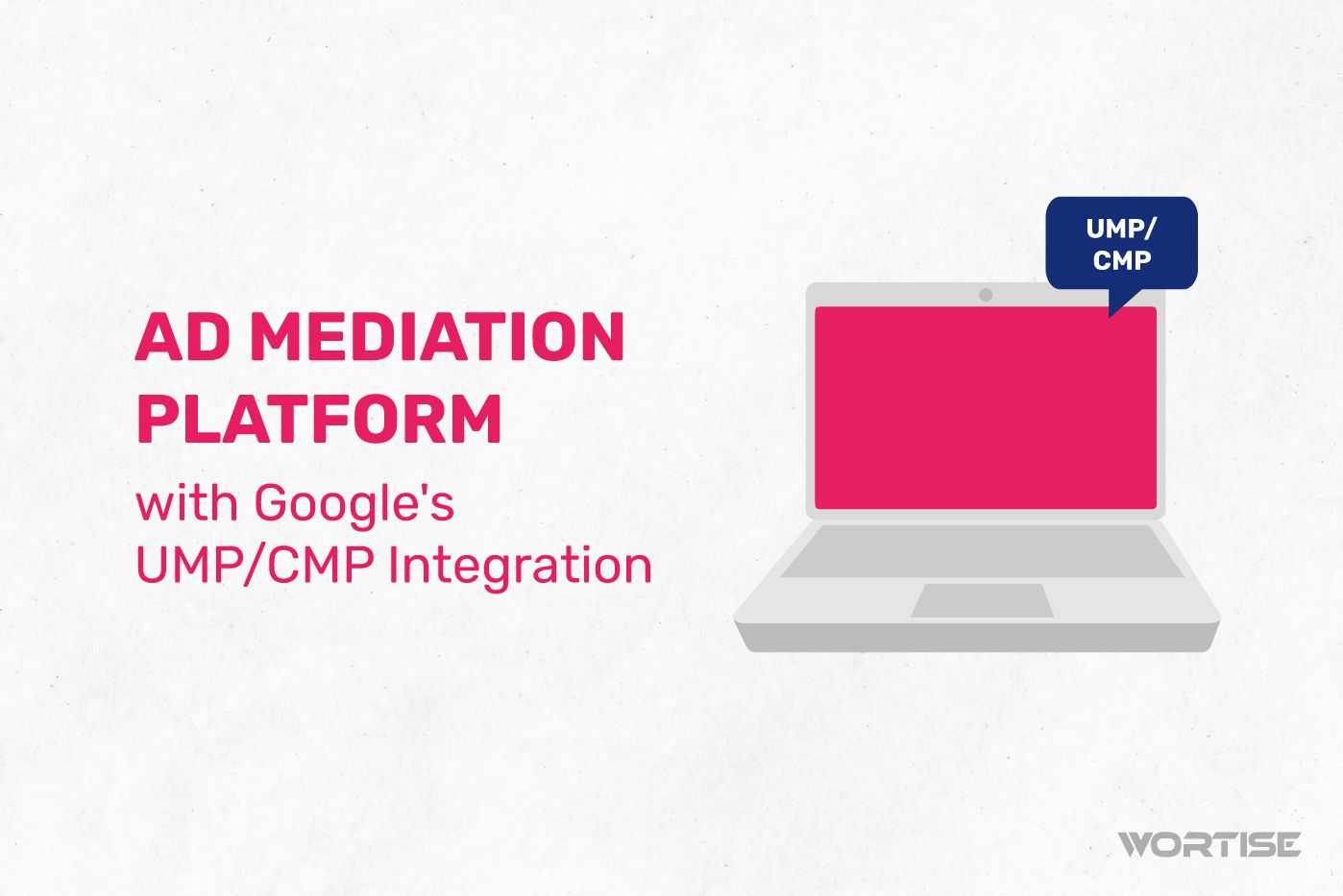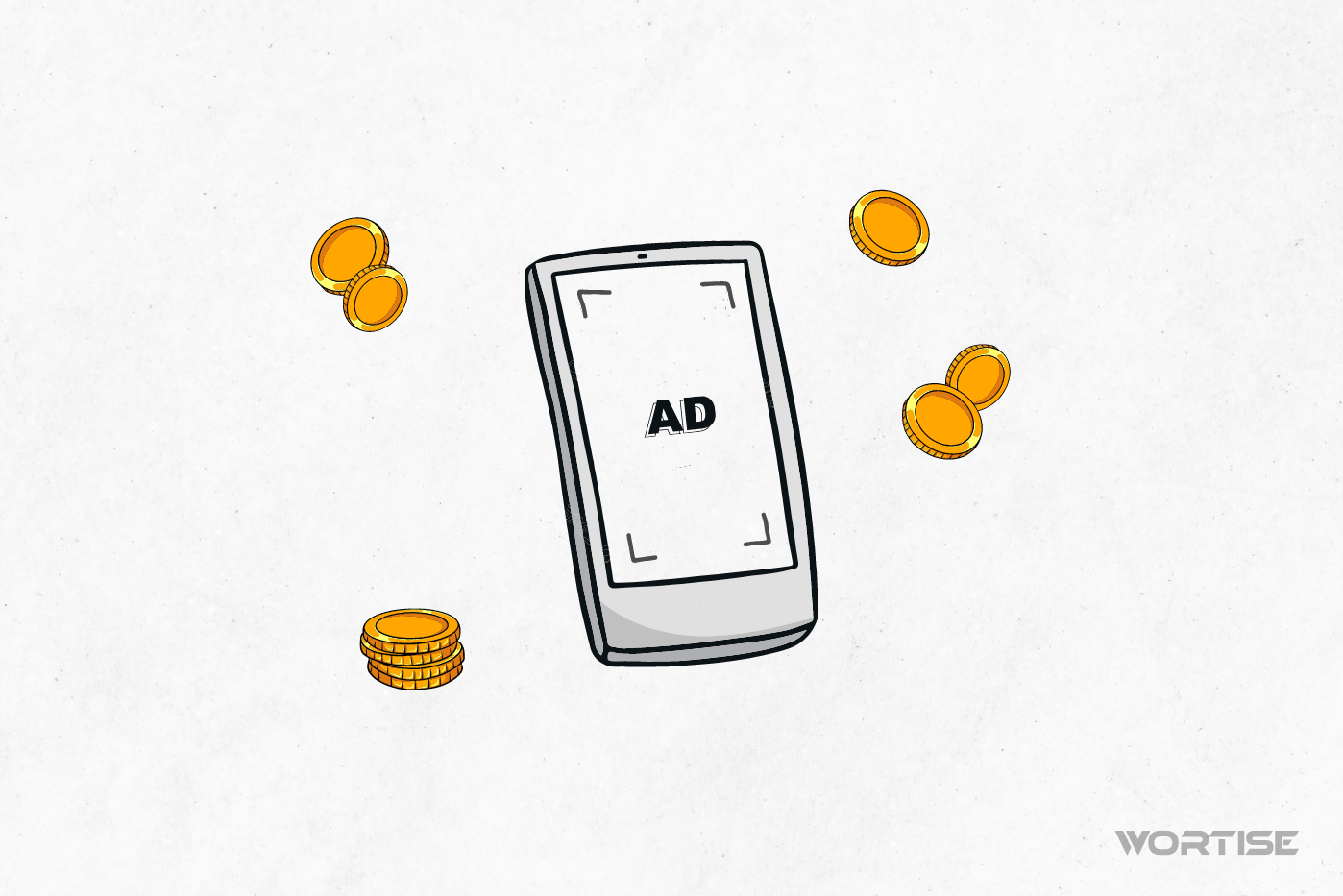Feeling frustrated because there are many empty spaces in your inventory? Instead of worrying, you should focus on applying effective tactics to leverage the various sources of demand that hybrid waterfalls offer. Managing them isn’t easy and can be quite challenging, but with proper optimization, you can reduce manual work and achieve good results.
At this stage of the game, it’s hard to imagine the world of mobile advertising without the introduction of hybrid waterfalls or Header Bidding technology. Their use is crucial for every publisher to sell excess inventory and generate profits every month.
But how can you achieve this? What can you do to reduce manual work in hybrid waterfalls? We’ve gathered some practices in this post that you can implement right away to improve your inventory’s performance. Let’s show you!
First and foremost, what are hybrid waterfalls?
Hybrid waterfalls are a popular and efficient strategy for maximizing advertising revenue for each publisher, although many consider Header Bidding to be replacing them (we’ll discuss this technology in another post).
Hybrid waterfalls can be defined as a technique that combines elements of traditional waterfalls and real-time bidding (RTB) auctions. In other words, it’s a sequence that follows a hierarchical order and is executed manually and automatically.
It starts with direct deals, moves on to ad networks, and concludes with programmatic auctions. The combination of these sales approaches helps each publisher maximize their monetization levels and achieve a higher fill rate.
The challenge for each publisher, as mentioned at the beginning of the text, is to learn how to manage these hybrid waterfalls effectively to reduce manual work and avoid consuming more time than necessary.
How do hybrid waterfalls work?
In a hybrid waterfall, a sequence of steps is established to sell advertising impressions through different demand channels, giving priority to the most valuable options at each stage.
In this working model, supply-side platforms (SSPs) and ad networks are ranked based on the average historical performance of each publisher. In other words, SSPs with the best effective cost per thousand impressions (eCPM), latency, and fill rate, among other indicators, come first. Then, impressions are passed from one SSP to another sequentially until they are sold.
From highest to lowest
To better explain the concept of hybrid waterfalls, let’s define their structure. The waterfall starts with direct deals. Each publisher reserves impressions to be sold to premium advertisers following customized parameters (fixed prices, deadlines, ad formats, and more).
Then, if all inventory spaces are not filled, the remaining impressions are sent to ad networks, which act as intermediaries between publishers and advertisers.
If the inventory is still not fully filled through ad networks, it moves on to real-time auctions, also known as RTB. In this phase, multiple buyers compete against each other through bids to secure spaces at the best prices.
It’s worth noting that impressions from ad networks and RTB tend to have slightly lower rates than direct deals. In other words, as the waterfall descends in search of advertisers to fill the gaps, prices also decrease.
But far from being a negative point, it’s an advantageous action. Why? It’s better to fill the inventory with ads that yield less than to leave it empty and not monetize anything. In this industry, every penny counts.
Another noteworthy point is that waterfalls should be configured by users according to their criteria and objectives. The priority order of the waterfall will depend on the strategies employed by each person.
Ready! Best practices for better hybrid waterfall management
To mitigate manual work, we recommend following these practices for hybrid waterfall management.
#1 Add multiple ad networks
A smart step to take is to add multiple ad networks and real-time bidding auctions. This makes your inventory competitive, and the hybrid waterfall you design has more opportunities to attract advertisers.
The result is clear: you move toward a higher fill rate, potentially generating better average revenue per daily active user (ARPDAU). Adding ad networks helps fill gaps that you couldn’t occupy with direct deals.
#2 Perform A/B testing on your waterfall
Don’t take everything for granted! To reduce manual work in monetizing your app, consider using A/B testing to see if your waterfall produces positive results or not.
Simply compare your existing waterfall with a new one. Then, analyze the key metrics from that test and stick with the one that delivers better results.
#3 Adjust priorities if necessary
Analyzing the performance of each level of the waterfall is essential. You can’t rely on assumptions and assume that your highest revenue comes from direct deals. What if it’s not the case? What if you monetize more with open auctions?
Whatever the case may be, it’s advisable to observe which demand sources are generating better results in terms of impression fill rate. Only then can you adjust the waterfall’s priority and your ad space prices.
#4 Set clear rules for each level of your waterfall
Being able to set parameters, taking into account your goals and needs as a publisher, will allow you to make the most of each level of the hybrid waterfalls. For example, you can set realistic minimum prices (study the market) and restrict specific ads that could harm your app’s reputation, ensuring they don’t infiltrate any level of the waterfall.
All of these actions can be done in advance to reduce manual work.
#5 Use the right technology
In addition to the arrow, the bow you use to shoot also matters. What do we mean by this? While you can apply the best tactics to leverage hybrid waterfalls, your efforts can be diluted if you don’t have the support of a suitable programmatic advertising platform.
An ideal platform is one that provides tools for controlling and optimizing each waterfall easily and efficiently, saving you time and reducing manual workload. Additionally, you should also evaluate how many Ad Mediation networks it connects to, so you can determine whether it will connect you with relevant advertisers or not.
#6 Monitor constantly
Managing hybrid waterfalls requires constant monitoring and regular adjustments. Remember that the digital advertising market is highly dynamic, and you need to be prepared to adjust your strategies. It’s very helpful to stay informed about market trends and advertiser behavior. For example, if you notice that users of your app have a strong preference for ads related to video games, you can configure a waterfall to attract valuable advertisers from this niche.
#7 Improve ad loading times
In addition to the work you need to do in terms of monetization, don’t neglect the role of constantly optimizing your app to ensure a pleasant user experience. Make the necessary adjustments and ensure that each ad loaded in your application is not excessive, as excessive ads can reduce the waterfall’s performance.
Advantages and Disadvantages of Hybrid Waterfalls
We hope that by now, you have a clear understanding of how hybrid waterfalls work. Now, let’s look at some advantages of effectively managing hybrid waterfalls:
- By offering the most valuable impressions, you have more opportunities to generate higher advertising revenue.
- There is flexibility and autonomy. Each publisher can define rules for each level of the waterfall, including restrictions and prices.
- It’s possible to integrate direct deals into the demand flow, leading to stable revenue acquisition.
- Reduced manual work is also a notable advantage. Each publisher can automate part of the work and focus on other areas in their app.
However, as we mention the good, we should also mention the drawbacks:
- Although their implementation may be easier than other technologies (such as Header Bidding), we cannot deny that they require technical knowledge to integrate multiple demand sources and analyze metrics.
- There is a risk that valuable impressions may be diluted if not assigned to the correct level.
- Despite providing tips to reduce manual work, we cannot deny that managing a hybrid waterfall requires time and effort. You need to conduct analysis, monitor, and closely examine the results.
3 Platforms to Implement the Hybrid Waterfall Strategy
#1 Google AdMob
This ad mediation platform from the American tech giant offers integration with various demand sources, allowing you to diversify your monetization efforts. You can control prices and priorities for your inventory, access a wide network of advertisers, compete in real-time auctions, and take advantage of various ad formats it offers.
#2 Wortise
Wortise is an ad mediation platform created by publishers for publishers. We work with first-party data technology to reach hyper-segmented audiences, thereby increasing the value of each impression.
Our system optimizes creatives and prioritizes those with the best performance. Additionally, we have an anti-fraud system that reduces bounce rates and increases traffic.
We mediate with ad networks like AdMob, AppLovin, and AdColony to give you more opportunities to fill your inventory, and with our personalized support, you can achieve up to double the eCPM that Google AdMob offers.
#3 IronSource
IronSource is a popular app monetization platform that offers a programmatic waterfall approach, combining direct ads with ad networks. It has a comprehensive dashboard that allows you to control every detail of your strategy.
You can choose the formats you want to include in your inventory and segment users based on their interests. What do you need to do to succeed with this ad mediation? It’s easy: just put into practice all the tips we provided to maximize the effectiveness of hybrid waterfalls.
Ready to achieve an above-average fill rate? With Wortise, it’s possible!
Hello, Publisher! To monetize more than you expect, you need to connect with the best advertisers in the market without investing too much time or effort. That’s where Wortise, the #1 ad mediation platform in LATAM, comes in.
We work with first-party data technology to bring you premium audiences and elevate the value of each impression. But beyond that, we have an advanced ad network mediation platform consisting of more than 100 Ad Networks.
With Wortise, you can achieve the highest eCPM in the market, and our support and tactics help you maximize your earnings.




